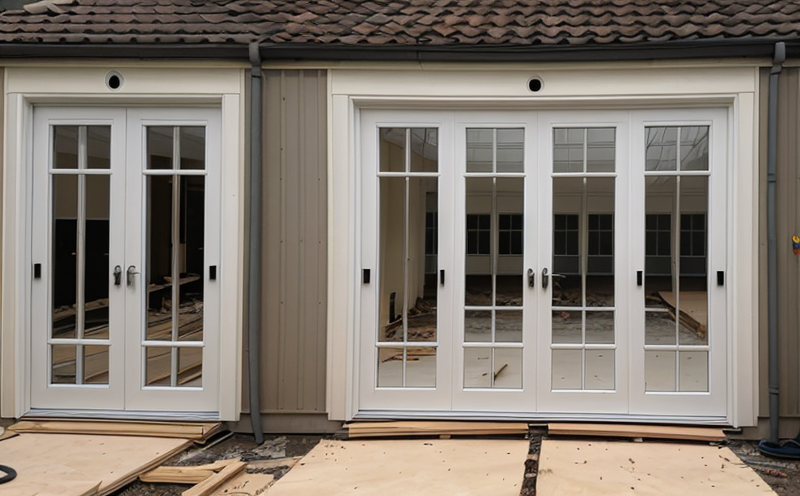Fire Performance Testing of Door Hardware (Hinges, Frames)
In fire safety testing, ensuring that door hardware components like hinges and frames meet stringent standards is critical. The performance of these elements during a fire event can significantly impact the overall effectiveness of a building's fire protection strategy.
Doors are crucial barriers in preventing the spread of fire within buildings. However, their resilience under fire conditions depends not only on the door itself but also on its hardware. Fire-resistant hinges and frames play a vital role by maintaining structural integrity, allowing doors to close properly, and providing a seal against smoke and flames.
The testing process for evaluating the fire performance of these components involves subjecting them to controlled environments that simulate real-world scenarios. This ensures compliance with international standards such as ISO 17692-3:2018 for door hardware in fire tests, which specifies procedures for testing the resistance to spread of flame and smoke.
Testing typically includes exposing specimens to temperatures exceeding 750°C (1,382°F) within a standard furnace. Specimens are observed over time to measure how they perform under these extreme conditions. Key parameters include the time taken for flames to pass through the specimen, the rate at which smoke spreads, and whether there is any deformation or failure of the hardware.
Preparation prior to testing involves careful selection and assembly of hinges and frames according to specified dimensions and materials. The specimens must be in a condition that accurately reflects their intended use, ensuring realistic results. Afterward, they undergo rigorous inspection by trained technicians who assess their structural integrity before and after exposure.
Advanced instrumentation plays an essential role in monitoring the performance of door hardware during testing. This includes thermocouples for measuring temperature changes, gas analyzers for tracking smoke and other combustion products, and high-definition cameras to capture visual evidence of any failures. These data points are crucial for generating comprehensive reports that can guide improvements or confirm compliance.
The importance of this service cannot be overstated, especially in sectors like commercial real estate, healthcare facilities, and public buildings where fire safety is paramount. By adhering strictly to these tests, organizations ensure not only regulatory compliance but also the highest level of protection for occupants and assets.
Benefits
The benefits of conducting fire performance testing on door hardware extend beyond mere compliance with regulations. Organizations that invest in this service gain several advantages:
- Enhanced Safety: Ensures that critical components like hinges and frames contribute effectively to the overall fire safety strategy.
- Regulatory Compliance: Meets international standards, thereby avoiding costly penalties or legal issues.
- Reputation Boost: Demonstrates a commitment to quality and safety, which can enhance brand reputation.
- Cost Savings: Prevents potential damages from fires by ensuring robust hardware that can withstand high temperatures without compromising performance.
Industry Applications
The application of fire performance testing on door hardware is widespread across various industries, including:
- Commercial Real Estate: Ensuring that office buildings and shopping centers meet stringent fire safety requirements.
- Healthcare Facilities: Protecting patients and staff in hospitals and clinics.
- Public Buildings: Safeguarding public spaces like schools, libraries, and community centers.
Customer Impact and Satisfaction
Customers who opt for fire performance testing of door hardware experience tangible benefits that translate into enhanced safety and peace of mind:
- Increased Safety: Ensures that critical components like hinges and frames perform optimally under extreme conditions.
- Peace of Mind: Knowing that the testing adheres to international standards, thus providing confidence in the product’s reliability.
- Enhanced Reputation: Demonstrates a commitment to quality and safety, which can significantly improve customer satisfaction.





